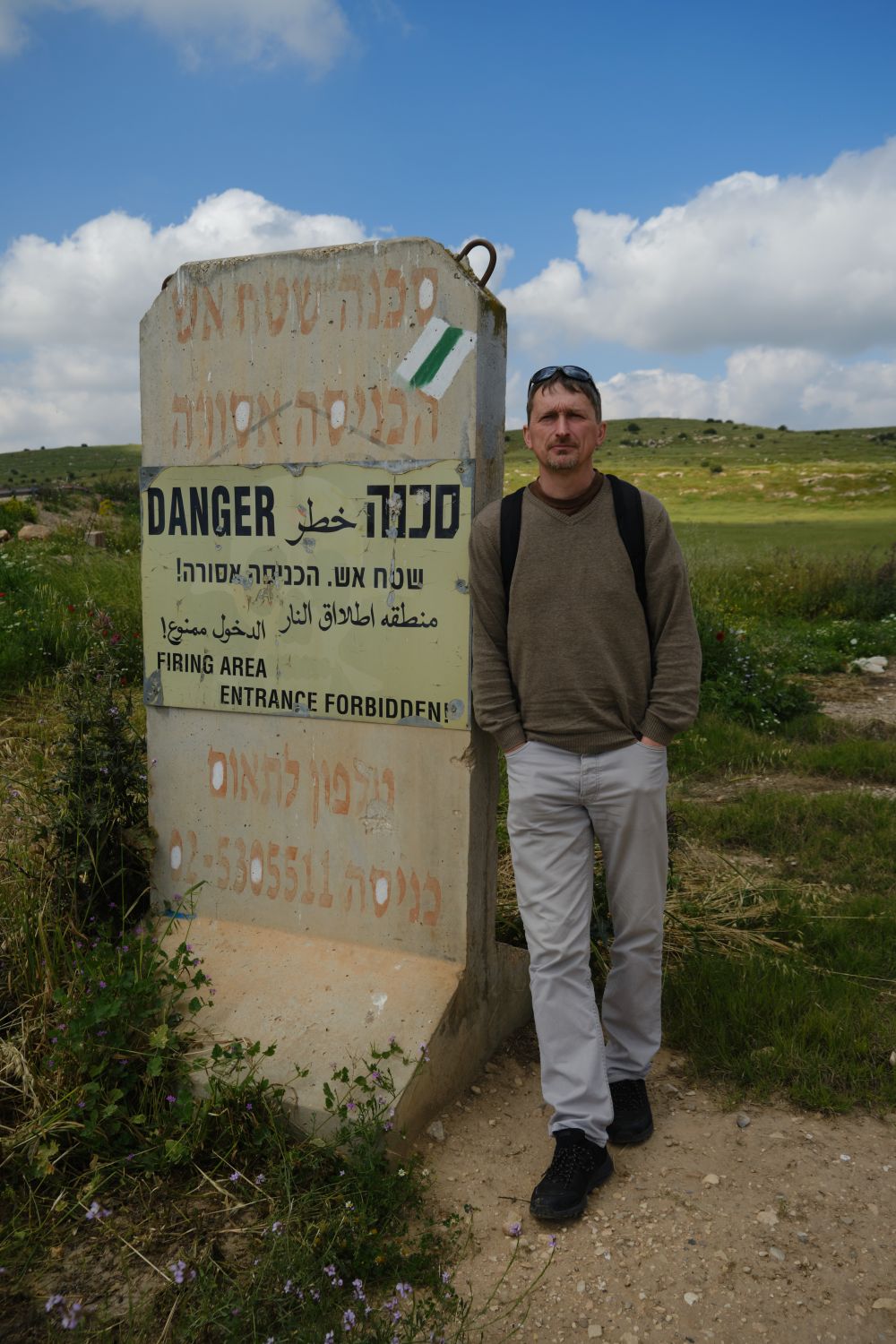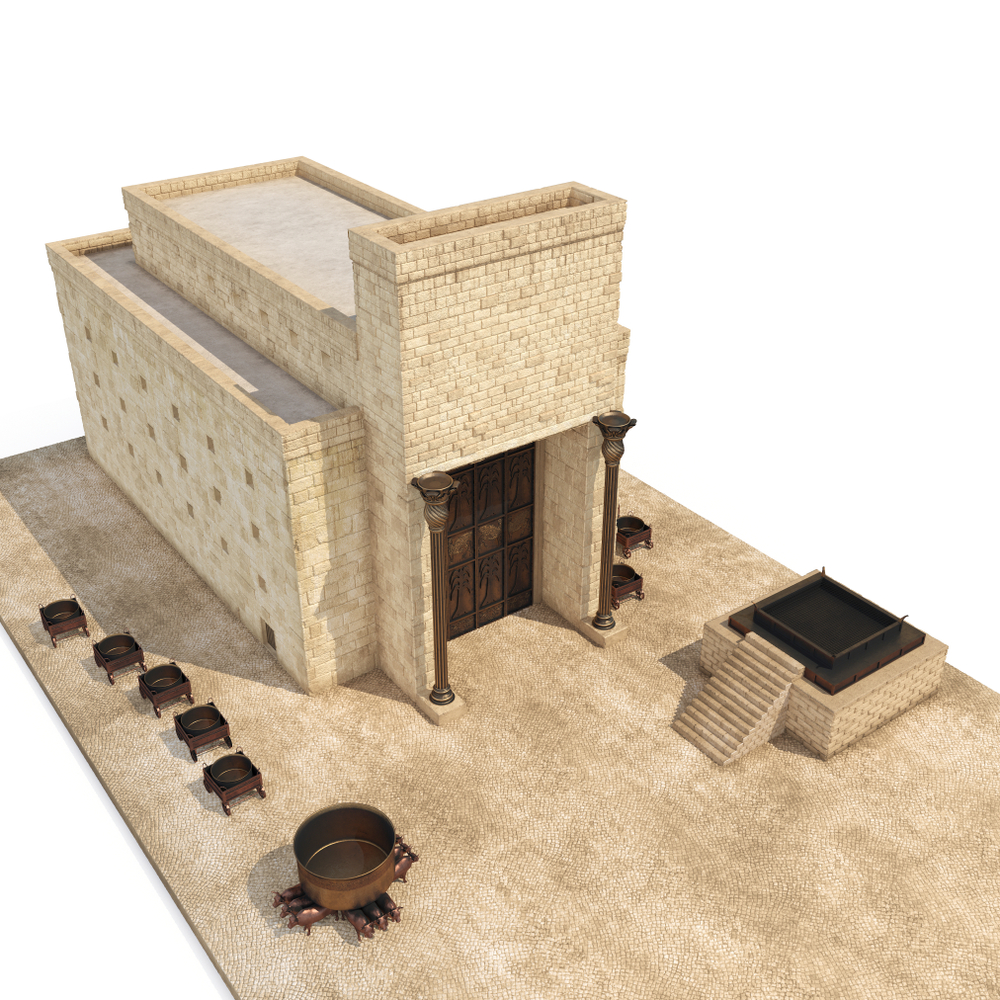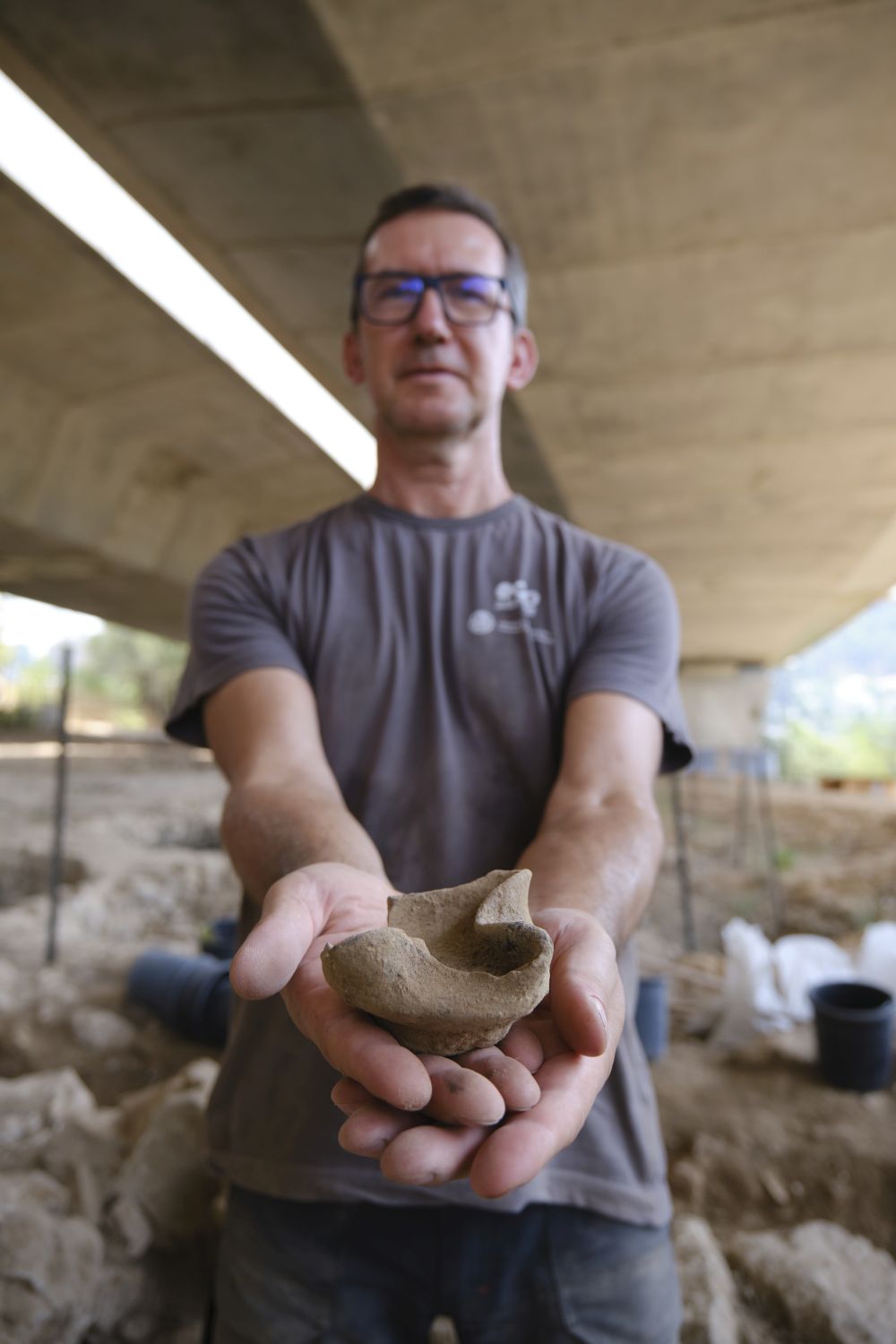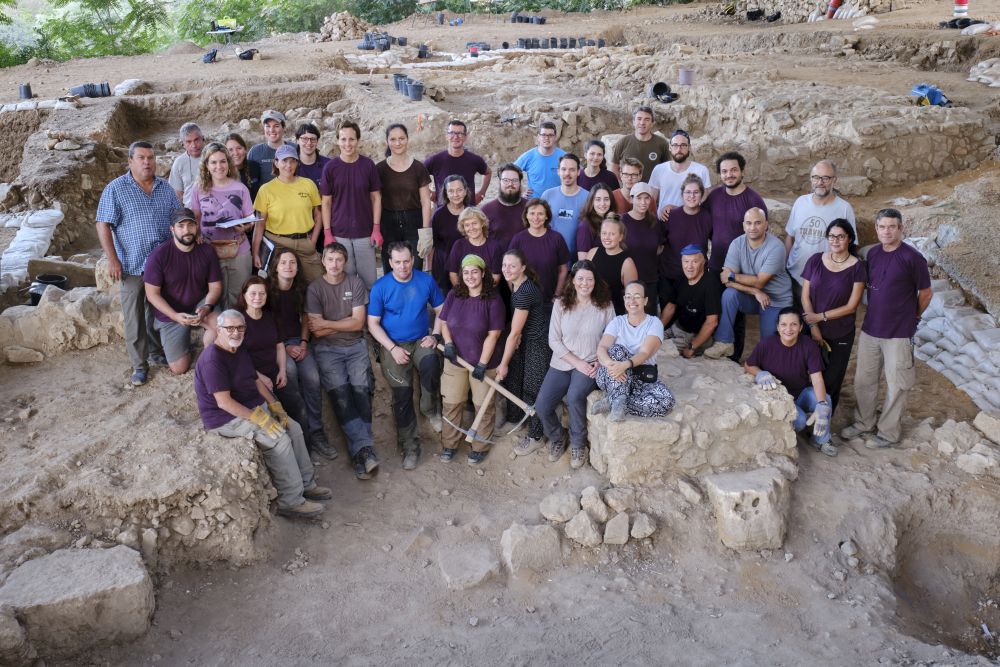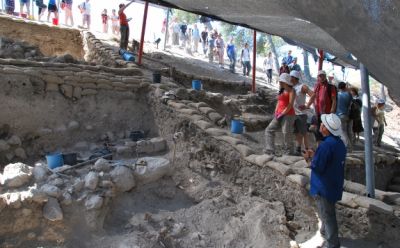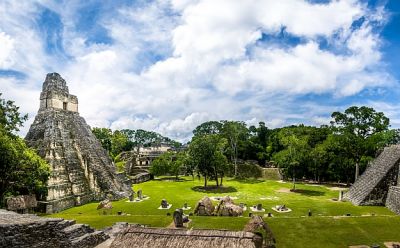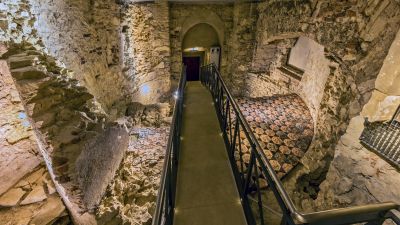It seems there were two, though many believe there should be only one – a great temple in Jerusalem that was overseen and named after the Biblical King Solomon, a temple that was the sole centre of religion for the kingdom of Judah. The first temple is said to have stood on the Temple Mount, housing in its innermost and most sacred room, the Ark of the Covenant, prior to the sacred building’s destruction in the Siege of Jerusalem. But no material evidence of its existence has ever been found.
However, in 2012, Israeli archaeologists discovered the remains of a sanctuary that matches in principle the parameters of Solomon's Temple. The archaeological site was uncovered not in the centre of Jerusalem, but in its suburbs. In the locality of Tel Moza. Theologians from the Protestant Theological Faculty of Charles University, headed by Associate Professor Filip Čapek, have contributed to important research at this most fascinating and unexpected site. Forum spoke to him ahead of a press event at the Carolinum this week.
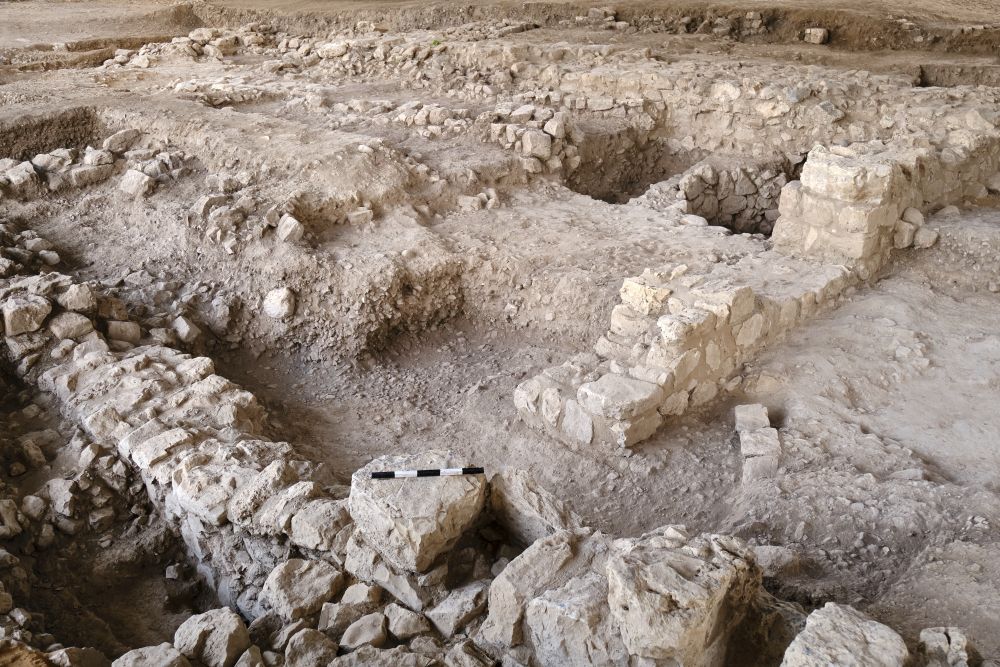
A look at the ancient temple unearthed by archaelogists at Tel Moza, Israel.
After a delay or layoff in 2020 due to the pandemic, you returned to Israel this August for archaeological research at the Tel Moza site. What was new that you discovered at the site?
This year's new and key finding is that we were able to establish the basic dimensions of the temple thanks to the discovery of the western perimeter wall. We now know that it was 24 meters long and 13 meters wide. Due to later settlements, parts of the temple were very badly damaged; therefore, I believe that the dimensions, even now, may not be completely accurate.
The temple was built on a slope, so part of it was washed away into the valley. In addition, the site was used for farming until the 20th century and people built stone terraces from whatever they could find, which included remnants of the walls of the ancient temple.
But it wasn't just the remains of the temple that you discovered...
That’s right: during this time, we found evidence of several houses, a silo for storing grain and we also found a large amount of pottery from the Iron Age. From this we learned what the buildings looked like, how people lived there and what they did. The area so far uncovered at Tel Moza is a complex where religious and economic activity came together. Sacrifices were presented in the courtyard of the temple and there were probably some administrative buildings in the immediate vicinity. Grain and all agricultural produce from the surrounding area were accumulated in nearby unearthed silos.
The Old Testament makes little mention of the Tel Moz area. Yet it was there that archaeologists discovered this sanctuary the size of Solomon's Temple, which according to the Old Testament, was the only religious centre of the time. How do you explain the discrepancy?
This is one of the questions that emerged with the discovery of the temple, and one that is difficult to answer. If it had been a common site, which then fell into oblivion over three thousand years, there would have been nothing special about it. But the question is how a temple of such remarkable size - the only one of its kind yet discovered in the area to date - could have been forgotten. My colleagues and I from the Department of the Old Testament at the Protestant Theological Faculty agree that biblical texts often highlight certain themes and even places and deliberately let others fall into oblivion. Tel Moza is perhaps one of them.
Why Tel Moza?
It has to do with the political and religious transformations in the 7th and 6th centuries BC, when, according to biblical texts, there was a centralization of cult. Sanctuaries in the cities of the Kingdom of Judah were abandoned and religious life was transferred only in Jerusalem. At least according to these texts. Tel Moza is about six kilometres away from Jerusalem, which seems close to us today, but for ancient times it was quite far. It is likely, therefore, that this is also why the temples first operated in parallel, perhaps as late as the 6th century B.C., but later the one in Moza was abandoned. So far, these are all just hypotheses; we do not yet know the exact date the temple was no longer used. One interpretation is that the temple was purposely destroyed; however, we have not found evidence of this during archaeological excavations..
To which cult was the temple at Tel Moca dedicated?
It is suggested that it was a Yahwistic temple. But it's not so clear. Firstly, we don't know exactly when it was built, and we don't have a detailed history of the temple. A more precise dating by radiocarbon dating has not yet taken place.
Because it is architecturally consistent with the way the Old Testament describes Solomon's Temple, it is suggested that its origins should be placed in the 10th century B.C. But this raises another question that scholars have been asking, which is when the Kingdom of Judah came into being. According to the biblical stories, it was already in the time of Kings Saul, David and Solomon - that is, in the very late 11th and then especially in the 10th century B.C. But many of the stories and characters of that time stand on the edge of history and myth.
What is your take?
I believe that the kingdom of Judah did not emerge as a distinct territorial and politically visible entity until the second half of the 9th century B.C. Likewise, I would be reluctant to say that we have a 10th century B.C. temple and that it was Yahwistic, because even the kingdom of Judah in the mid-9th century B.C. was not only Yahwistic. We know from excavations in Jerusalem and from the Bible that as late as the 9th century B.C. there were temples in the city dedicated to various gods.
This summer at Tel Moza, an unusually shaped stone was discovered, described by one of the foremost experts on iconography, Professor Tallay Ornan of Hebrew University of Jerusalem. According to her, the stone formed the feet of a statue of the god Baal, who may have been worshipped in the temple. There is a great debate in our field as to when we can iconographically identify the Yahwist cult. In other words, the debate revolves around the question of when Yahweh became Yahweh and was not a representation of other deities, especially Baal, El, Hadad, and then conversely, whether these representations were adopted and used as Yahwistic attributes... We do not made enough finds to say unequivocally who the temple was intended for in its early years, i.e., in the late 10th century BC.
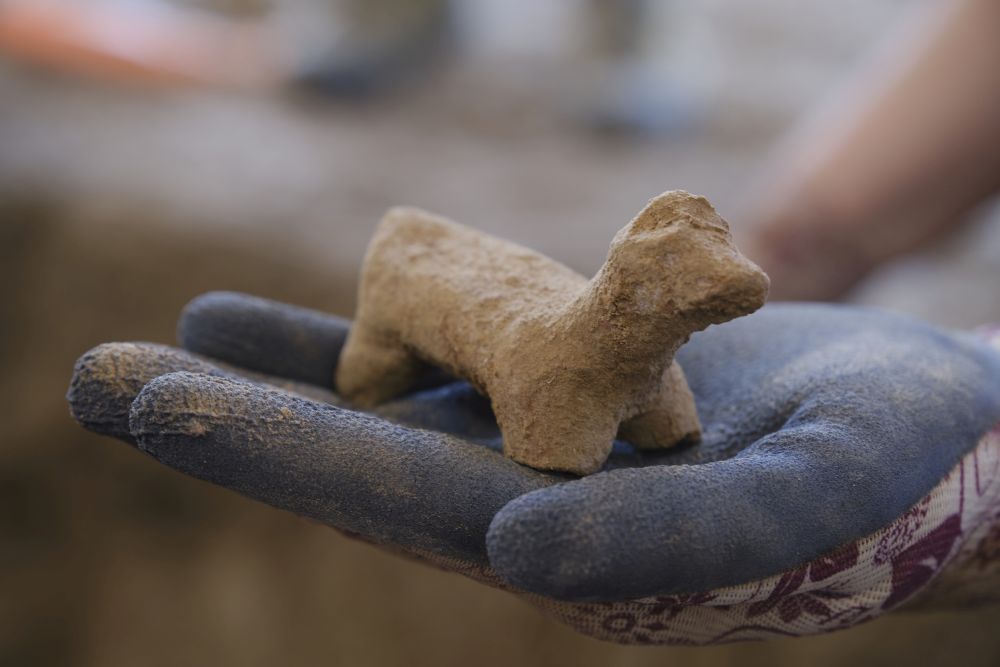
An ancient horse figurine discovered at the site.
Can further research in the area answer this question?
Possibly, in 2013 season conducted by present co-director of the excavations Shua Kisilevitz, a variety of cult artefacts were found in the main courtyard, including horse statues and human heads. There is debate as to what their function was. It has also been suggested that the heads may have been an early Yahwistic representation But most scholars reject this view as unsubstantiated. Our knowledge is severely limited by the absence of written evidence from the period.
Does the discovery of the temple bring a new dimension to how we view religious life in the Kingdom of Judah?
The discovery confirms what we suspect from the biblical texts: religious life at that time was very diverse.
What was the relationship between Jerusalem and Tel Moza at that time?
This is another fundamental question that we cannot yet answer. Both were probably two important centres that existed in parallel. Jerusalem was the political and religious centre, Tel Moza served as an administrative place where the agricultural produce of the fertile valley was gathered. Jerusalem stands on the border of the desert, a highly unsuitable environment for agriculture.
The question is whether Tel Moza was even part of the kingdom of Judah. It is likely that in the 10th century B.C. there were several relatively separate political entities or polities in the area. Moza may have been one of these and only integrated into Judea at a later date. But this is a highly debated question. If you ask five of my colleagues, you will get five different answers (smiles). Personally, I would consider Moza to be a late Canaanite settlement in the early stages of settlement, which only later became part of the kingdom of Judah. There have also been a number of theories about Moza, including the slightly exaggerated one about whether it is not the very temple described in the Old Testament that King Solomon had built, which of course it is not.
How do we know?
It can't be the so-called First Temple, both in terms of place and the nature of the settlement. What has been uncovered so far is just a temple, a silo and a few surrounding buildings. No other wider settlement has been found there, as in Jerusalem, on a few hectares, no walls have been discovered, whether of the Temple period or earlier. Tel Moza is on the whole smaller than what Jerusalem of that time would have looked like. The biblical texts, which clearly anchor the temple in Jerusalem, also play a role
| Tel Moca |
| During the construction of the highway between Jerusalem and Tel Aviv, Israeli archaeologists discovered the remains of the temple and other settlements, probably dating from around the 10th century B.C., during a 2012 survey. The area is located about six kilometres northwest of the centre of Jerusalem. This is a truly sensational find, as no shrine in Israel has ever been found that so closely matches the description of the so-called First Temple, which King Solomon built according to the Old Testament. Moreover, the Bible says that there was to be only one such temple, and that it was located in Jerusalem on the Temple Mount. Field research is underway at the site and is scheduled to continue until 2023, during which time other parts of the site will be excavated. In addition to Israeli scientists, a team from Charles University and the University of Osnabrück in Germany is also working on the research. |
You say that the First Temple could not have stood on the Temple Mount in Jerusalem because the mount is located outside what was the City of David. Do you still stand by that theory? Aren't your Israeli colleagues trying to talk you out of it?
I just gave a lecture about this at the end of November in the framework of an international seminar we are organising together with the universities of Tel Aviv, Zurich, Heidelberg and Tübingen. There was no objection, but rather the discussion turned to other topics, or additional comments were made. I realise that even in terms of the current self-conception of the modern State of Israel, this is still a very sensitive subject, especially now that tensions are rising over the status of the Temple Mount. But I am personally convinced of this regardless of these debates.
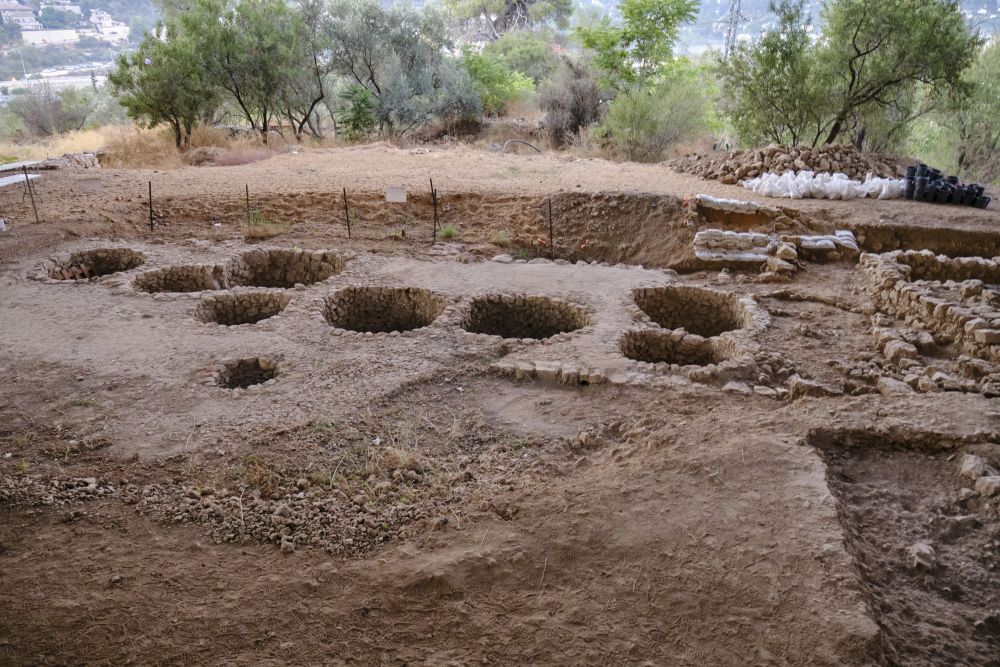
I just gave a lecture about this at the end of November in the framework of an international seminar we are organising together with the universities of Tel Aviv, Zurich, Heidelberg and Tübingen. There was no objection, but rather the discussion turned to other topics, or additional comments were made. I realise that even in terms of the current self-conception of the modern State of Israel, this is still a very sensitive subject, especially now that tensions are rising over the status of the Temple Mount. But I am personally convinced of this regardless of these debates.
In the 10th century BC, the ancient City of David was located outside the present-day walls, which were, by the way, built in the 16th century by Sultan Suleiman I. The original Jerusalem was located on the place of an earlier Bronze Age settlement, and was situated much lower for strategic reasons, closer to the water source. Only later the city was expanded upwards into the Temple Mount area. I believe that the earliest settlement there was in the late 9th or early 8th century B.C. The construction of Solomon's Temple is dated by biblical texts to the 10th century B.C. If one were to argue that the temple on the mount was built in the 9th or 8th century B.C. and that the shift back in time has theological significance, I would not object.
Could there have been more temples in ancient Judah of the size and type of the one at Tel Moza?
More conservative scholars will tell you that this was an exception and that no other temple can be found. But others argue that there may have been more such temples and it is only a matter of time before more are discovered. I would probably agree with the latter. It should be noted here that archaeological sites are not explored in full detail, and it is not always entirely possible to uncover the entire site because of existing development and the financial and time commitment involved. After all, even the temple in Tel Moza was found only by chance during a salvage excavation.
Shrines were a part of regular religious life. Even in Jerusalem itself there may have been more temples or sanctuaries. The biblical texts also record this when they have the priests of the temple dedicated to Baal and the priests of the Yahwistic temple fighting with each other.
You're involved in archaeological research in a very politically tense area. Is there any effect on your work?
Israeli colleagues will tell you that they are only doing their job, which is archaeological research, which is true. But at the same time, it's always a political element, even if it's secondary. It also depends on where you dig. There is also exploration in disputed territories, in very sensitive places for Jews and Muslims. Therefore, it is very important not to make the results of any research a tool for any national or religious agenda.
We need to present the results of the work carefully and not just to create sensations. Maybe that is why we sometimes seem a bit distant, because we don't want to immediately put everything into a context that we don't see behind our work. This also applies to the current ubiquitous media "Solominisation" of the Temple in Tel Moza. After all, it is actually an anachronism; the temple may have stood here before the one in Jerusalem.
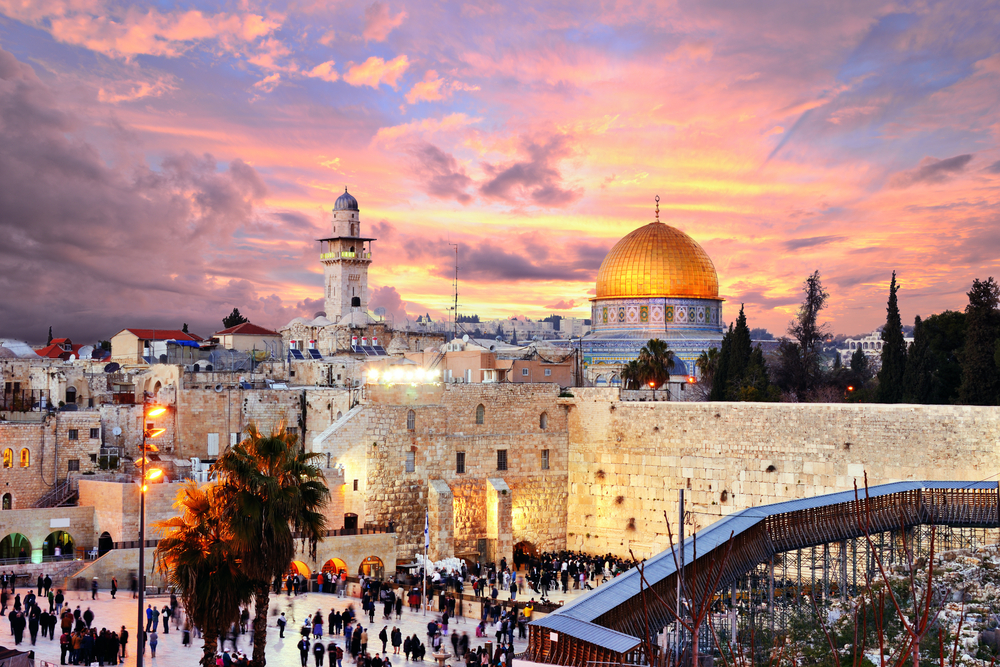
A view of the Temple Mount in present-day Jerusalem.
The head of the entire research team, Professor Oded Lipschits of Tel Aviv University, pointed out that there are more theologians involved in the research than archaeologists. You too are primarily a theologian. Don't you get internally conflicted when working on excavations when the findings sometimes disprove something the Old Testament claims?
It is good, even necessary, to participate in field research to understand biblical texts. I consider it essential. It adds in practice to the picture of how religious thought evolved and changed over time, so rather than a contradiction it is a great enrichment, and a mutual one. It is also good to learn the basic craft. I am therefore glad that we have students coming with us who acquire more than theoretical knowledge in the classroom but also gain experience and knowledge in the field and through seminars called field school, where they are taught by Israeli colleagues.
Could research in Tel Moza even be done without theologians? Do archaeologists take your arguments into account?
They see it as a joint venture between several professions. My colleague Oded Lipschits is not only an archaeologist, he is also very well versed in biblical studies. But there are archaeologists who want to stay consistently with the material, non-written culture. For example, Professor Yuval Gadot, a good friend and acquaintance of mine, refers to us as ‘text people’ and says that he wants nothing to do with texts. He concentrates on architecture and archaeology as such. But it seems to me that the two disciplines are complementary and the result of the research is more accurate and more conclusive.
For you, as a biblical scholar who deals with Old Testament texts, the discovery of a temple from the Kingdom of Judah must be something of a dream come true?
It is definitely crucial. Working at a site that brings together the world of material culture and ancient texts is a stimulus for further research in Israel. In this research, all the disciplines that our faculty is involved in - biblical studies (working with texts), archaeological research (exploring ancient history) and religious studies (exploring ancient religions) - are intertwined, and I am very happy for that.
But the big problem is money, Israel is very expensive. Every year things gets more complicated in this respect. My other dream is to have funding for at least five years of research ahead of time, not to fund our work from year to year and worry about whether we will be able to return to Israel for further field research at all.
| Associate Professor Filip Čapek |
| Filip Čapek specialises in Old Testament theology and archaeology and history of the Southern Levant. He is a graduate of the Protestant Theological Faculty of Charles University, where he currently works at the Department of the Old Testament. He is a member of the Centre for Biblical Studies, a joint department of CU and the Czech Academy of Sciences. He leads a Czech team that regularly participates in archaeological excavations in Israel at the sites of Tel Azekah (since 2012) and Tel Moza (since 2019). |


